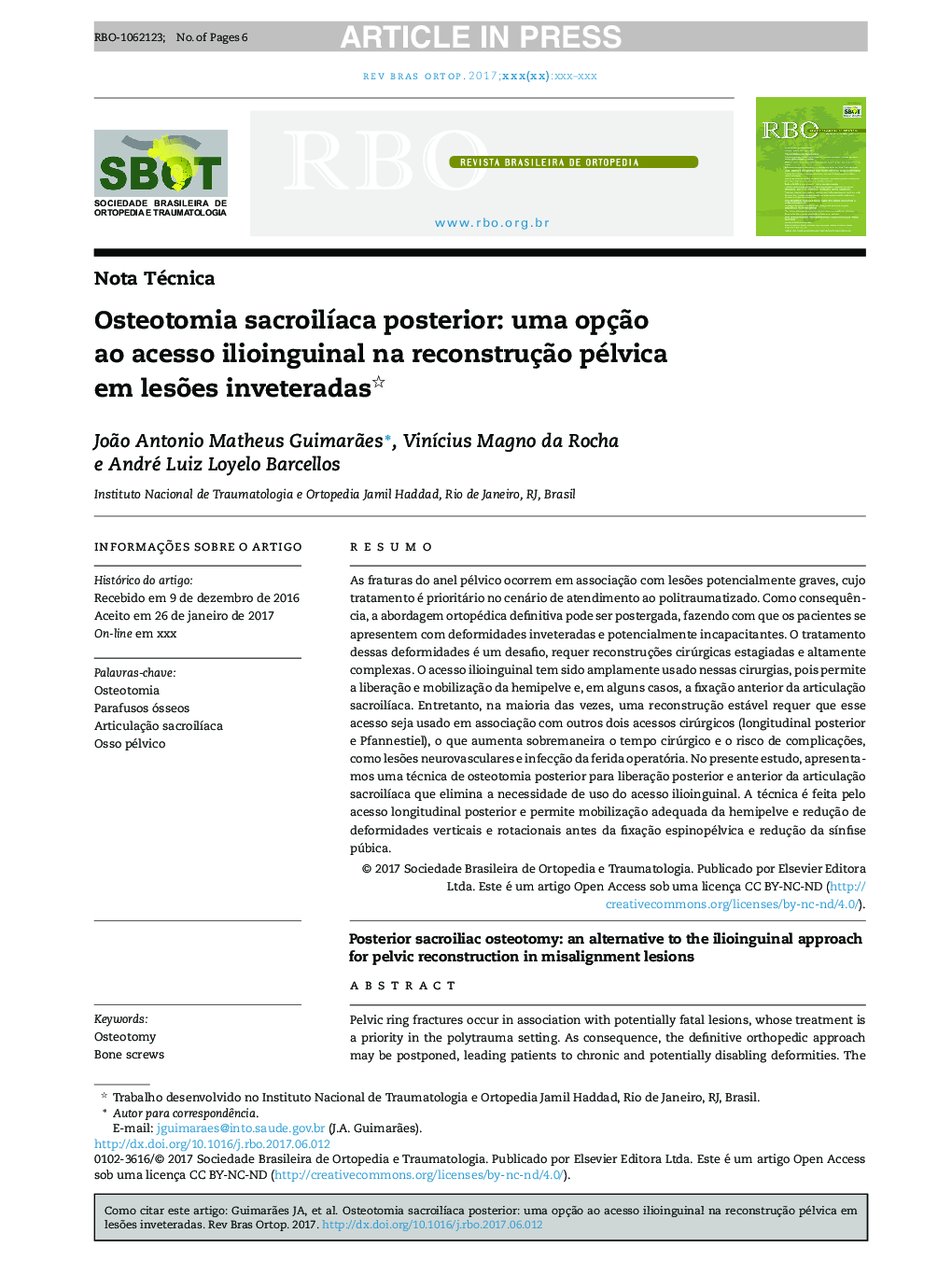| Article ID | Journal | Published Year | Pages | File Type |
|---|---|---|---|---|
| 8599427 | Revista Brasileira de Ortopedia | 2017 | 6 Pages |
Abstract
Pelvic ring fractures occur in association with potentially fatal lesions, whose treatment is a priority in the polytrauma setting. As consequence, the definitive orthopedic approach may be postponed, leading patients to chronic and potentially disabling deformities. The treatment of these deformities is a challenge, requiring highly complex and staged surgical reconstructions. The ilioinguinal approach has been widely used in these surgeries, because it allows the release and mobilization of the hemipelvis and, in some cases, anterior fixation of the sacroiliac joint. However, in most cases, stable pelvic ring reconstruction requires this approach to be complemented by two other surgical approaches (posterior longitudinal and Pfannestiel). This requirement critically increases the surgical time and the risk of complications, such as neurovascular lesions and surgical wound infection. The current study presents a posterior osteotomy technique for posterior and anterior release of the sacroiliac joint, eliminating the need for ilioinguinal approach. The technique is performed by posterior longitudinal access; it allows adequate mobilization of the hemipelvis and reduction of vertical and rotational deformities, before the spinopelvic fixation and reduction of the pubic symphysis.
Related Topics
Health Sciences
Nursing and Health Professions
Physical Therapy and Rehabilitation
Authors
João Antonio Matheus Guimarães, VinÃcius Magno da Rocha, André Luiz Loyelo Barcellos,
